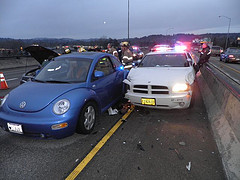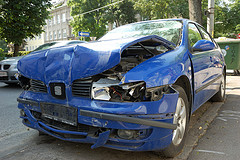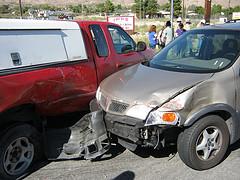
flic.kr/p/7AuyCj
As the driver of this car was turning left out of a parking lot, she was struck by an approaching SUV. The impact was severe, and vehicle damage was extensive. However, the driver escaped unscathed. She didn’t even seek medical attention. A likely reason was the side airbag that cushioned her head, chest, and abdomen during the collision. These are reducing driver deaths in cars struck on the near (driver) side by an estimated 37 percent. Airbags that Read more . . .


